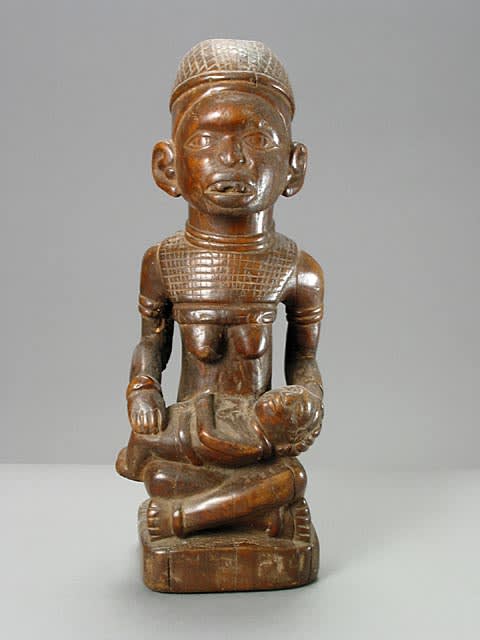Kongo Wooden Maternity Sculpture, 20th Century CE
Wood
5.25 x 13.625
PF.5941
Further images
Throughout history, the concept of mother and child united together has been a potent symbol; the source of works of art depicting universal images of fecundity and nourishment. Kongo, also...
Throughout history, the concept of mother and child united together has been a potent symbol; the source of works of art depicting universal images of fecundity and nourishment. Kongo, also known as the Bakongo (the prefix “ba-” meaning “people”), maternity figures, called pfemba, are among the most celebrated works of African art because of their easily recognizable theme, their classical form and their fine workmanship. Furthermore, their full meaning and roll in Kongo society has not been determined with certainty because of the wealth of traditional content of the sculpture, both historic and symbolic. Therefore, today there is doubt that the model was the virgin and child, first introduced by missionaries in the 16th. Century. This fetish helped to promote fertility, so crucial to the future of any tribe. As the mother sits cross-legged, she holds her baby carefully, in preparation for the child to suckle her breast. The figure wears a knitted bonnet, or mpu, that suggests high rank and is generally associated with a chief. The grid pattern covering her upper torso and shoulders might represent either a woven shawl or else the raised patterns of decorative scarification that were considered marks of her sexuality and rank. Her face shows also great expression with her mouth held slightly ajar, revealing her two front teeth. With her headdress, the collar, the bracelets and the infant (possibly an heir), the sculptor suggests a high rank in society. Such statues were probably used by the ancestral cult. In the past, similar sculptures have been considered funeral figures. With the smoothness of the wood and the care taken in creating this expressive sculpture, we realize the importance that these pieces had on the lives of people and the care that these people took in creating and revering them.







